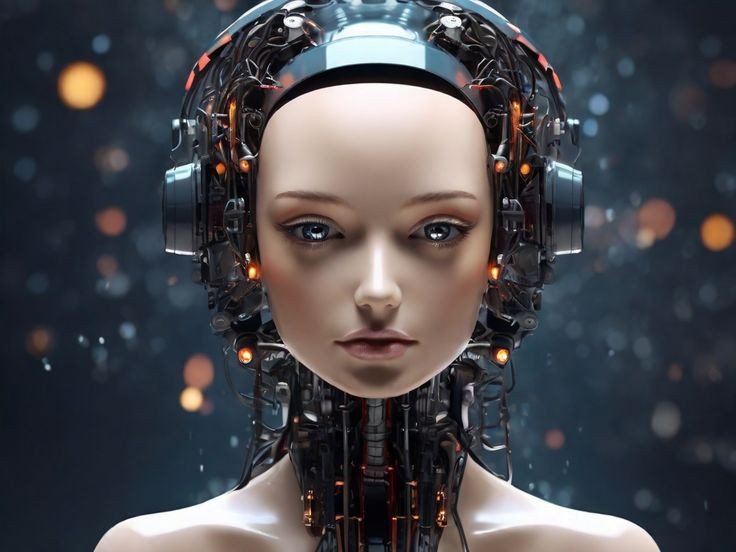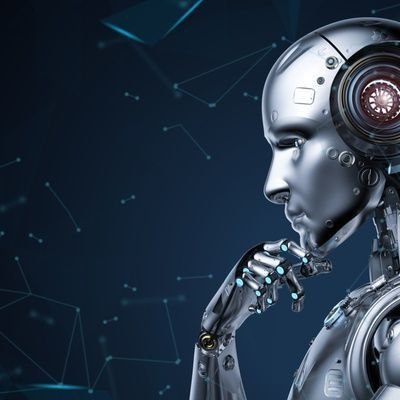
Humanoid robots, designed to resemble and mimic human form and behavior, have fascinated researchers, engineers, and the public for decades. These robots, with their ability to walk, talk, and interact with the world much like humans do, represent a significant leap in robotics and artificial intelligence. Recent innovations in humanoid robots have brought us closer to a future where robots are not only functional but also capable of engaging in complex social interactions, performing a wide range of tasks, and even expressing emotions. This article explores the latest innovations in humanoid robots, the challenges they face, and the potential future applications of these advanced machines.
The Evolution of Humanoid Robots
Humanoid robots have evolved significantly since their inception. Early models were primarily designed for research purposes and were often limited in their capabilities. However, advances in robotics, artificial intelligence, materials science, and sensor technology have led to the development of humanoid robots that are more sophisticated, versatile, and lifelike than ever before.
Early Humanoid Robots
The history of humanoid robots dates back to the mid-20th century, with the development of early robotic models like WABOT-1 in 1973, which was the first full-scale humanoid robot capable of walking and manipulating objects. These early robots were groundbreaking but limited in their ability to interact with humans or perform complex tasks.
Modern Innovations
Today, humanoid robots have come a long way, thanks to advancements in technology. Modern humanoid robots are equipped with advanced sensors, powerful processors, and sophisticated AI algorithms that enable them to perform tasks ranging from simple interactions to complex problem-solving. Some of the most notable innovations include:
– Sophia by Hanson Robotics: Sophia is one of the most famous humanoid robots, known for her human-like appearance and ability to engage in conversations using natural language processing. She has made public appearances worldwide and has even been granted citizenship in Saudi Arabia, highlighting the growing societal interest in humanoid robots.
– Atlas by Boston Dynamics: Atlas is a bipedal humanoid robot designed for mobility and agility. It is capable of navigating complex terrains, performing backflips, and executing precise movements with incredible balance and coordination. Atlas represents a significant advancement in robotic mobility and dexterity.
– Asimo by Honda: Asimo, short for Advanced Step in Innovative Mobility, was one of the first robots designed to walk and climb stairs. Although Honda has retired Asimo, it remains an iconic example of humanoid robotics and paved the way for future developments in the field.
Key Innovations in Humanoid Robots
Several key innovations have driven the development of modern humanoid robots, making them more capable and versatile than ever before.
Advanced Mobility and Balance
One of the most significant challenges in humanoid robotics has been achieving human-like mobility and balance. Innovations in this area have led to the development of robots that can walk, run, jump, and even perform complex acrobatic movements. These advancements are made possible through the integration of advanced sensors, such as gyroscopes and accelerometers, combined with sophisticated algorithms that allow robots to adapt to changing environments in real-time.
Atlas, developed by Boston Dynamics, is a prime example of innovation in robotic mobility. Atlas can navigate uneven terrain, maintain balance while performing dynamic movements, and recover from disturbances such as being pushed. This level of agility and balance brings humanoid robots closer to being able to operate in environments designed for humans, such as homes, offices, and disaster zones.
Artificial Intelligence and Machine Learning
Artificial intelligence (AI) and machine learning are at the heart of many innovations in humanoid robotics. These technologies enable robots to process and analyze vast amounts of data, learn from their experiences, and make decisions autonomously.
For example, humanoid robots equipped with AI can recognize faces, understand and generate human speech, and respond to emotional cues. This allows them to engage in more natural and meaningful interactions with humans. AI also enables robots to perform complex tasks, such as assisting in healthcare, providing customer service, or even conducting research.
Sophia, developed by Hanson Robotics, uses AI to engage in conversations, recognize faces, and express emotions through facial expressions. This combination of AI and robotics allows Sophia to interact with humans in a way that feels more natural and less robotic, pushing the boundaries of human-robot interaction.
Human-Robot Interaction
Improving human-robot interaction is a critical area of innovation in humanoid robotics. For robots to be truly useful in everyday life, they need to be able to understand and respond to human social cues, emotions, and language.
Innovations in natural language processing, computer vision, and emotion recognition have made it possible for humanoid robots to interact with humans in more sophisticated ways. These robots can understand and generate speech, recognize gestures, and even detect changes in a person’s emotional state. This makes them more effective in roles that require social interaction, such as caregiving, education, and customer service.
Humanoid robots like Pepper, developed by SoftBank Robotics, are designed to interact with people in social environments. Pepper can recognize faces, understand emotions, and engage in conversations, making it a valuable tool in settings such as retail stores, hospitals, and educational institutions.
Soft Robotics and Human-Like Appearance
Another important innovation in humanoid robotics is the development of soft robotics and materials that mimic human skin and muscles. Traditional robots are often rigid and mechanical in appearance, which can make interactions with humans feel unnatural. Soft robotics aims to address this by using flexible, adaptive materials that more closely resemble the softness and elasticity of human tissues.
These advancements allow humanoid robots to have a more human-like appearance and movement, making them more relatable and less intimidating to humans. For example, robots with soft, flexible faces can display a wider range of facial expressions, which is important for conveying emotions and building trust with humans.
Robots like Sophia and Nadine, a humanoid social robot developed by Nanyang Technological University, incorporate soft robotics to create more realistic and expressive faces. This enhances their ability to engage in social interactions and makes them more effective in roles that require empathy and emotional intelligence.
Autonomous Navigation and Object Manipulation
For humanoid robots to be truly functional in human environments, they must be able to navigate autonomously and manipulate objects with precision. Innovations in autonomous navigation and object manipulation have made it possible for robots to operate independently in complex environments.
Robots equipped with advanced sensors, cameras, and AI can map their surroundings, avoid obstacles, and find the most efficient paths to their destinations. They can also manipulate objects with dexterity, allowing them to perform tasks such as picking up and placing items, opening doors, or even cooking meals.
Robots like Atlas and the T-HR3 by Toyota are examples of humanoid robots that excel in autonomous navigation and object manipulation. These robots can perform a variety of tasks that require fine motor skills and spatial awareness, making them valuable in industries such as manufacturing, logistics, and healthcare.
Challenges in Humanoid Robotics
Despite the significant advancements in humanoid robotics, several challenges remain that must be addressed to fully realize the potential of these robots.
Technical Complexity
Humanoid robots are among the most complex machines ever developed. Creating robots that can replicate the full range of human movements, interactions, and behaviors requires advanced engineering, AI, and materials science. The complexity of these robots makes them expensive to develop and maintain, limiting their widespread adoption.
Energy Efficiency
Humanoid robots require a significant amount of energy to operate, especially when performing dynamic movements or interacting with their environment. Improving the energy efficiency of these robots is crucial to making them practical for everyday use. This involves developing more efficient power sources, such as advanced batteries or energy-harvesting technologies, as well as optimizing the robot’s movements to conserve energy.
Safety and Reliability
Safety is a critical concern in humanoid robotics, especially when robots are operating in close proximity to humans. Ensuring that robots can detect and avoid potential hazards, as well as respond to emergencies, is essential for their safe deployment in homes, workplaces, and public spaces. Additionally, robots must be reliable and able to function effectively over long periods without requiring constant maintenance or repairs.
Ethical and Social Considerations
The development and deployment of humanoid robots raise several ethical and social questions. For example, there are concerns about the potential for robots to replace human jobs, particularly in industries like customer service and manufacturing. Additionally, as robots become more lifelike, there are questions about the impact on human relationships and the potential for robots to influence human behavior in unintended ways.
Addressing these ethical and social considerations will be critical to ensuring that humanoid robots are developed and used in a way that benefits society as a whole.
Future Applications of Humanoid Robots
The innovations in humanoid robotics open up a wide range of potential applications across various industries. Some of the most promising areas include:
Healthcare and Elder Care
Humanoid robots have the potential to revolutionize healthcare and elder care by providing personalized assistance, monitoring patient health, and performing routine tasks. For example, robots could assist elderly individuals with daily activities, such as getting out of bed, taking medication, or preparing meals. In hospitals, robots could support healthcare professionals by transporting supplies, assisting with surgeries, or providing companionship to patients.
Education and Childcare
In education, humanoid robots could serve as interactive tutors, providing personalized instruction and support to students. These robots could also be used in childcare settings to engage children in educational activities, monitor their safety, and provide companionship.
Customer Service and Hospitality
Humanoid robots are well-suited for roles in customer service and hospitality, where they can interact with customers, provide information, and assist with tasks such as check-in or order processing. Robots like Pepper are already being used in retail stores, hotels, and airports to enhance the customer experience.
Search and Rescue
In disaster response scenarios, humanoid robots could be deployed to search for survivors, assess damage, and provide aid in environments that are too dangerous for humans. Robots with advanced mobility, balance, and autonomous navigation capabilities could navigate through rubble, tight spaces, and hazardous conditions to reach areas that are inaccessible to human rescuers. Equipped with sensors and communication tools, these robots could relay critical information to rescue teams, helping to save lives and speed up recovery efforts.
Space Exploration
Humanoid robots are also poised to play a crucial role in space exploration. Their human-like form makes them well-suited to operate in environments designed for humans, such as space stations or planetary habitats. Robots like NASA’s Robonaut have been designed to assist astronauts with tasks in space, ranging from simple maintenance duties to more complex scientific experiments. In the future, humanoid robots could be sent to explore other planets, performing tasks that are too risky or challenging for human astronauts.
Personal Assistance and Companionship
As humanoid robots become more advanced and affordable, they are likely to become more common in homes as personal assistants or companions. These robots could help with daily tasks, provide reminders, assist with entertainment, or even offer companionship to individuals living alone. For example, a humanoid robot could help an elderly person with mobility issues by fetching items or providing reminders to take medications. Additionally, these robots could serve as social companions, engaging in conversations, and providing emotional support.
Manufacturing and Logistics
In the manufacturing and logistics industries, humanoid robots could take on tasks that require dexterity, precision, and adaptability. For example, robots could work alongside human workers on assembly lines, handling tasks that involve complex manipulation or intricate assembly processes. In logistics, humanoid robots could be used to pick, pack, and transport items in warehouses, adapting to different products and environments more flexibly than traditional robotic systems.
The Future of Humanoid Robots
The future of humanoid robots is incredibly promising, with ongoing advancements likely to push the boundaries of what these machines can achieve. Several trends and developments will shape the future of humanoid robotics:
Continued Integration of AI
As artificial intelligence continues to advance, humanoid robots will become even more capable of understanding and interacting with their environment. AI will enable robots to learn from their experiences, improve their performance over time, and handle increasingly complex tasks. This will make humanoid robots more autonomous and capable, reducing the need for constant human intervention.
Improved Affordability and Accessibility
As technology advances, the cost of developing and manufacturing humanoid robots is expected to decrease, making them more accessible to a broader range of industries and individuals. This will likely lead to wider adoption of humanoid robots in various applications, from personal use in homes to professional use in industries like healthcare, education, and manufacturing.
Enhanced Human-Robot Interaction
Future innovations in human-robot interaction will focus on making interactions with humanoid robots more natural, intuitive, and engaging. This includes improvements in natural language processing, emotion recognition, and social intelligence, allowing robots to better understand and respond to human needs and emotions. These advancements will help build trust and rapport between humans and robots, facilitating their integration into everyday life.
Ethical and Social Considerations
As humanoid robots become more prevalent, it will be increasingly important to address the ethical and social implications of their use. This includes ensuring that robots are designed and deployed in ways that respect human dignity, privacy, and autonomy. Additionally, society will need to grapple with issues related to job displacement, data security, and the potential impact of robots on human relationships. Establishing ethical guidelines and regulatory frameworks will be crucial to ensuring that humanoid robots are used responsibly and for the benefit of society as a whole.
Collaboration with Humans
The future of humanoid robotics will likely involve closer collaboration between humans and robots, with each complementing the other’s strengths. Humanoid robots will take on tasks that are dangerous, repetitive, or physically demanding, while humans focus on tasks that require creativity, empathy, and complex decision-making. This collaboration will enhance productivity and innovation across various fields, from healthcare and education to industry and space exploration.
Conclusion
Humanoid robots represent one of the most exciting and rapidly advancing fields in robotics. Innovations in mobility, AI, human-robot interaction, and soft robotics are pushing the boundaries of what these machines can do, bringing us closer to a future where humanoid robots are a common part of our daily lives. As these robots become more capable and accessible, they will play an increasingly important role in a wide range of applications, from healthcare and education to space exploration and personal assistance.
However, the rise of humanoid robots also presents significant challenges that must be addressed, including technical complexity, energy efficiency, safety, and ethical considerations. As we continue to develop and integrate humanoid robots into society, it will be crucial to ensure that these technologies are used responsibly and in ways that enhance human well-being.
The journey of humanoid robots is just beginning, and the possibilities are vast. As technology continues to evolve, humanoid robots will undoubtedly play a transformative role in shaping the future, helping us solve complex problems, explore new frontiers, and enhance our capabilities in ways we never imagined.
ALSO READ: The Role of Blockchain in Supply Chain Management









